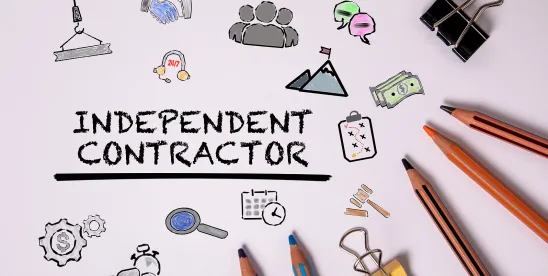The classification of independent contractors tends to cause employers of all sizes concern and confusion. For years, businesses have relied on flexible, non-employee labor to meet changing demands. But in 2025, the legal framework that governs who qualifies as an independent contractor is more uncertain than ever.
Employees v. Independent Contractors
In today’s ever-changing workforce, businesses often rely on a mix of employees and independent contractors. But knowing the difference between the two is not just a matter of terminology, it is a legal necessity. Misclassifying a worker can lead to serious financial and legal outcomes.
Key factors to consider differentiating between employees and independent contractors are control, financial independence, duration, and nature of relationships. Employees typically work under the direction of their employer. The company decides when, where, and how the work is done. Independent contractors, on the other hand, operate with a high degree of autonomy. They set their own schedules, use their own tools, and often work for multiple clients. Another important difference is financial independence. Employees are paid a regular wage or salary and do not bear the risk of profit or loss. Independent contractors, however, can make or lose money depending on how efficiently they manage their work. They often invest in their own equipment and cover their own business expenses. Lastly, the duration and nature of the relationship also matters. Employees usually have an ongoing relationship with their employer, while contractors are typically hired for specific projects or time-limited projects. And while employees perform work that is central to the business, contractors are often brought in for specialized tasks that fall outside a company’s central operations.
The Not So New Rule
In early 2024, the U.S. Department of Labor (DOL) introduced a new rule under the Fair Labor Standards Act (FLSA), aiming to clarify the distinction between employees and independent contractors. The rule emphasized a “totality of the circumstances” test, weighing six factors such as the level of control a business has over the worker, the worker’s opportunity for profit or loss, and whether the work is integral to the business. However, just over a year later, in May 2025, the DOL announced it would no longer enforce this rule in its investigations. The rule technically is still in effect, but primarily in private litigation rather than a tool for federal enforcement. This sudden shift leaves employers in a legal gray zone, in particular, those operating across multiple states.
The States Step In
While federal enforcement has softened, many states have moved in the opposite direction. California, for example, continues to apply its stringent ABC test under Assembly Bill 5 (AB5), which presumes a worker is an employee unless the employer can prove three specific conditions. Under AB5, which presumes a worker is an employee unless the employer proves: (A) the worker is free from control, (B) performs work outside the usual course of business, and (C) is engaged in an independently established trade. Massachusetts and New Jersey have adopted similar standards, making it significantly harder to classify workers as independent contractors.
This divergence means that a worker classified as an independent contractor under federal law might still be considered an employee under state law which makes matters more complex for, they trigger employers obligations for minimum wage, overtime, unemployment insurance, and similar employer responsibilities. Misclassifying a worker is not just a technical error, it could hurt the bottom line of businesses. Employers found to have misclassified workers may be liable for back wages, unpaid taxes, penalties, and even class-action lawsuits. In some cases, the reputational damage can be just as severe as the financial hit.
Employers Finding Their Way
So what should employers do in this uncertain environment? First, do not assume that federal non-enforcement means you are in the clear. State laws may still appl and in many cases, they are more stringent than federal standards. Second, review your current contractor relationships to determine if the workers are truly independent, or if they function more like employees. Finally, employers should ensure sure contracts are clear, documentation is thorough, and HR teams are trained in the latest developments. As the workforce continues to evolve and remote work becomes more prevalent, lawmakers and regulators will keep refining the rules in regard to all areas of employment. For now, the best defense is to be initiative-taking, and informed. The only thing that is more expensive than compliance is non-compliance.




 />i
/>i
